27 巻, 2 号
選択された号の論文の34件中1~34を表示しています
- |<
- <
- 1
- >
- >|
特集について
-
2009 年 27 巻 2 号 p. 123
発行日: 2009年
公開日: 2011/11/15
PDF形式でダウンロード (140K)
展望
-
2009 年 27 巻 2 号 p. 124-127
発行日: 2009年
公開日: 2011/11/15
PDF形式でダウンロード (64K) -
2009 年 27 巻 2 号 p. 128-129
発行日: 2009年
公開日: 2011/11/15
PDF形式でダウンロード (735K)
解説
-
2009 年 27 巻 2 号 p. 130-134
発行日: 2009年
公開日: 2011/11/15
PDF形式でダウンロード (485K) -
2009 年 27 巻 2 号 p. 135-138
発行日: 2009年
公開日: 2011/11/15
PDF形式でダウンロード (1059K) -
2009 年 27 巻 2 号 p. 139
発行日: 2009年
公開日: 2011/11/15
PDF形式でダウンロード (213K) -
2009 年 27 巻 2 号 p. 140
発行日: 2009年
公開日: 2011/11/15
PDF形式でダウンロード (153K) -
2009 年 27 巻 2 号 p. 141
発行日: 2009年
公開日: 2011/11/15
PDF形式でダウンロード (116K) -
2009 年 27 巻 2 号 p. 142
発行日: 2009年
公開日: 2011/11/15
PDF形式でダウンロード (83K) -
2009 年 27 巻 2 号 p. 143-146
発行日: 2009年
公開日: 2011/11/15
PDF形式でダウンロード (822K) -
2009 年 27 巻 2 号 p. 147
発行日: 2009年
公開日: 2011/11/15
PDF形式でダウンロード (266K) -
2009 年 27 巻 2 号 p. 148
発行日: 2009年
公開日: 2011/11/15
PDF形式でダウンロード (191K) -
2009 年 27 巻 2 号 p. 149
発行日: 2009年
公開日: 2011/11/15
PDF形式でダウンロード (247K) -
2009 年 27 巻 2 号 p. 150
発行日: 2009年
公開日: 2011/11/15
PDF形式でダウンロード (196K) -
2009 年 27 巻 2 号 p. 151
発行日: 2009年
公開日: 2011/11/15
PDF形式でダウンロード (158K) -
2009 年 27 巻 2 号 p. 152-155
発行日: 2009年
公開日: 2011/11/15
PDF形式でダウンロード (309K) -
2009 年 27 巻 2 号 p. 156
発行日: 2009年
公開日: 2011/11/15
PDF形式でダウンロード (206K) -
2009 年 27 巻 2 号 p. 157
発行日: 2009年
公開日: 2011/11/15
PDF形式でダウンロード (146K) -
2009 年 27 巻 2 号 p. 158
発行日: 2009年
公開日: 2011/11/15
PDF形式でダウンロード (171K) -
2009 年 27 巻 2 号 p. 159
発行日: 2009年
公開日: 2011/11/15
PDF形式でダウンロード (179K) -
2009 年 27 巻 2 号 p. 160
発行日: 2009年
公開日: 2011/11/15
PDF形式でダウンロード (76K) -
2009 年 27 巻 2 号 p. 161
発行日: 2009年
公開日: 2011/11/15
PDF形式でダウンロード (363K) -
2009 年 27 巻 2 号 p. 162
発行日: 2009年
公開日: 2011/11/15
PDF形式でダウンロード (130K) -
2009 年 27 巻 2 号 p. 163
発行日: 2009年
公開日: 2011/11/15
PDF形式でダウンロード (259K)
コラム
-
2009 年 27 巻 2 号 p. 164-167
発行日: 2009年
公開日: 2011/11/15
PDF形式でダウンロード (168K)
論文
-
2009 年 27 巻 2 号 p. 169-177
発行日: 2009年
公開日: 2011/11/15
PDF形式でダウンロード (547K) -
2009 年 27 巻 2 号 p. 178-187
発行日: 2009年
公開日: 2011/11/15
PDF形式でダウンロード (1249K) -
2009 年 27 巻 2 号 p. 188-198
発行日: 2009年
公開日: 2011/11/15
PDF形式でダウンロード (2473K) -
2009 年 27 巻 2 号 p. 199-208
発行日: 2009年
公開日: 2011/11/15
PDF形式でダウンロード (948K) -
2009 年 27 巻 2 号 p. 209-220
発行日: 2009年
公開日: 2011/11/15
PDF形式でダウンロード (887K) -
2009 年 27 巻 2 号 p. 221-229
発行日: 2009年
公開日: 2011/11/15
PDF形式でダウンロード (1408K) -
2009 年 27 巻 2 号 p. 230-238
発行日: 2009年
公開日: 2011/11/15
PDF形式でダウンロード (951K) -
2009 年 27 巻 2 号 p. 239-248
発行日: 2009年
公開日: 2011/11/15
PDF形式でダウンロード (1419K) -
2009 年 27 巻 2 号 p. 249-257
発行日: 2009年
公開日: 2011/11/15
PDF形式でダウンロード (972K)
- |<
- <
- 1
- >
- >|
